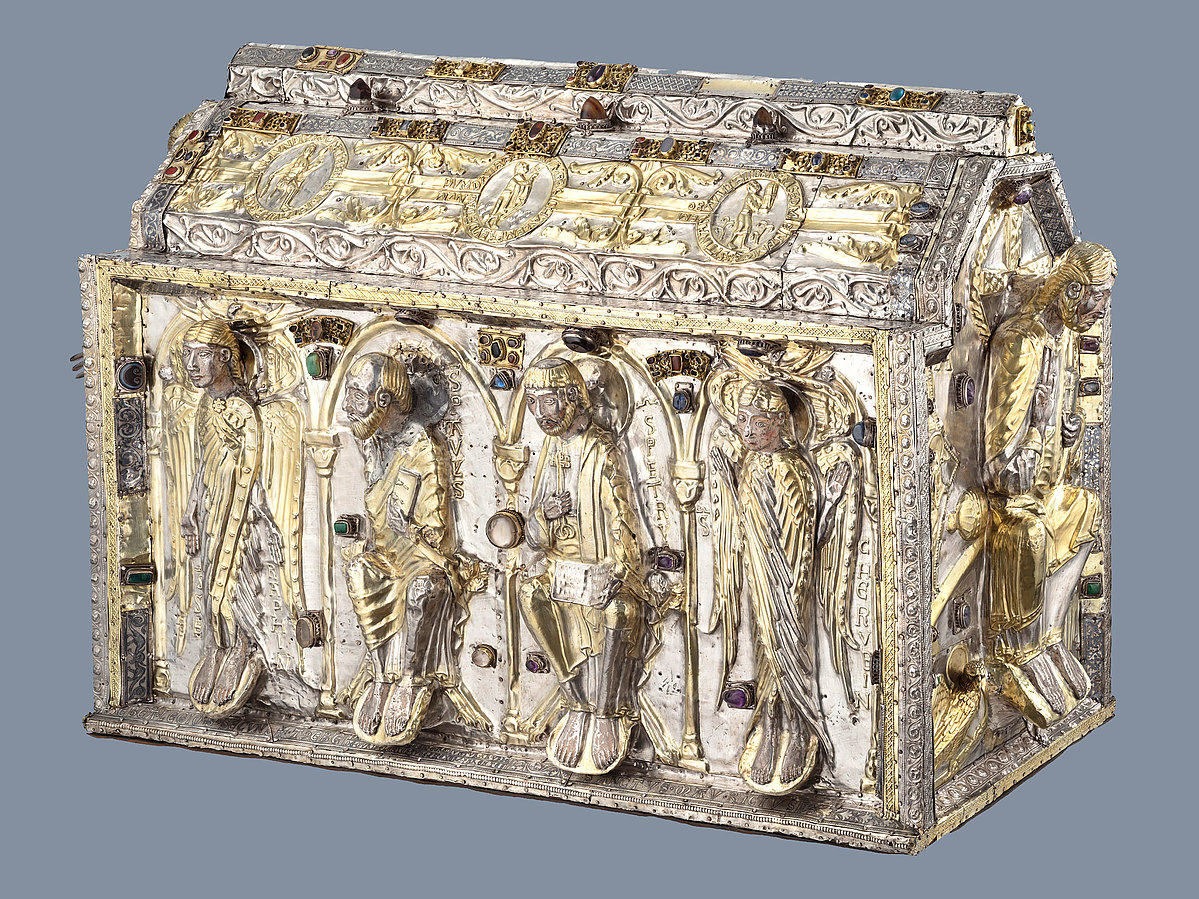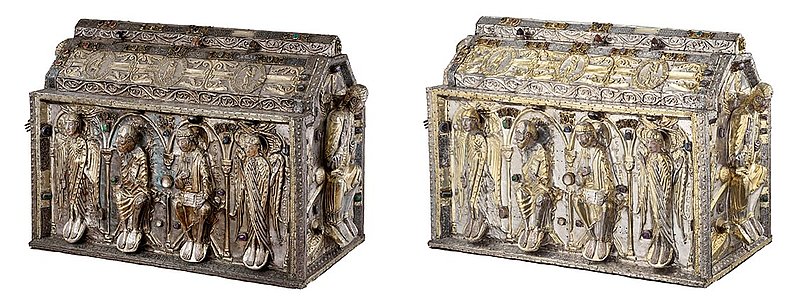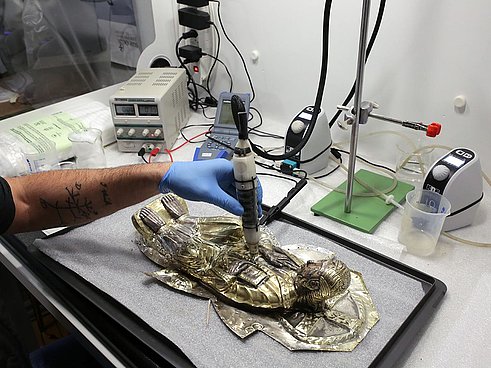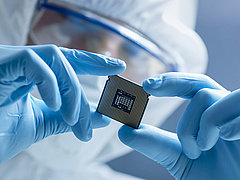KNF develops extreme pumps for extreme conditions in close cooperation with Canon Nanotechnologies, Inc.
Electrolytic Cleaning: Let It Shine!
How KNF pumps help restoring valuable silver treasures from the Middle Ages

Treasures can be of material and immaterial value. The reliquary of Abbaye de Saint-Maurice in Valais, Switzerland is both. With a collection this valuable, preservation is of great importance and requires experts to use the latest restoration technology to preserve the cultural heritage for future generations. In this conservation process, KNF dosing pumps play a leading role because they provide outstanding properties which allow for an ideal preservation.
A Jewel of the Northern Alps
Located in the beautiful Swiss Alps, the Abbaye de Saint-Maurice guards an important reliquary treasure of the Catholic Church. Partially dating back 1500 years, it is a collection of enormous relevance from early medieval times. It encompasses several reliquaries of various sizes and several valuable items like shrines, caskets, vases and crosses. Due to its exceptional quality, it is one of the most important religious treasures in the Northern Alps.
In 2021, a conservation project of one of the collection’s most significant pieces, the Great Shrine of Saint Maurice which dates back to the 13th century, was completed. This conservation was done with the help of electrolytic cleaning using the latest restoration technology. Now, the silver and gold-plated reliquary decorated with gems and figures shines in its former glory.

Electrolytic Cleaning – A Difficult Undertaking
With time, silver tarnishes – it darkens, loses its shine and gets a dull surface. This is caused by chemical reactions with chlorine or sulfur turning the silver dark. Silver objects that are not of high value can be polished by removing the tarnish layer physically with the help of an abrasive. This method is relatively quick and easy to conduct but unsuitable for valuable objects as it removes material from the surface with every application.
Tarnish removal processes that are more state-of-the-art use electrolysis. Here, the objects are immersed in an electrolyte and the chemical reactions that caused the tarnish are reversed with the help of an electrical reduction. This method is advantageous as it does not remove any material from the workpiece. However, conventional electrolysis is only suitable for water-resistant objects. For ancient artefacts, this is a problem because they are often made of wood or contain other materials that must not get wet.
Pleco – Revolutionizing Electrolytic Cleaning
During a research project of the Haute Ecole Arc Conservation-restauration (HE-Arc CR), an expert team developed a technology that enables the removal of tarnish via electrolysis without the need for full immersion in fluid. The Pleco solution is named after a fish which cleans aquariums. It is also called electrolytic pencil or brush.
The handheld device is placed onto a metal surface where it applies electrolytic liquid and then sucks it right back up. Like conventional electrolysis, Pleco also works with an electrical current applied to the fluid. For a full tarnish removal, conservators need to place the electrolytic brush for 20 to 120 seconds onto the area. The fluid used during the preservation process at Abbaye de Saint-Maurice is a Sodium nitrate (NaNO3) electrolyte buffered with sodium acetate (C2H3NaO2) and acetic acid (CH3COOH). This technology can also be used for corrosion stabilization of lead.
In addition, experiments are being considered for the stabilization of archaeological copper alloy artefacts for the stabilization of chlorides – an unstable corrosion that endangers these precious finds.
Electrolytic Cleaning Requires Adjustable Flow Rate and Reliable Operations
Connected to the electrolytic brush are two KNF SIMDOS® 10 dosing pumps that move the fluid. One pump delivers the fluid onto the workpiece where it reacts with the metal. It is then gently drawn off by the second pump. After that, the liquid is filtered and refed to the circuit. During the development process of Pleco, the team of scientists evaluated various pump options. When experimenting with the KNF pump, it became clear that this was the most superior option and the decision for KNF was made within just half a day.
The requirements for the pump solution were demanding and only the KNF technology proved to be fully satisfactory. For the process to work flawlessly, the pumps need to offer a flow rate that can be adjusted precisely between 1 and 100 ml/min. In addition, the suction pump must also be able to suck in air bubbles without letting any fluid flow back. This is important as a backflow of the used liquid would cause impurities on the valuable artefacts’ surfaces. Developed for the most demanding laboratory applications, it is no wonder that the KNF SIMDOS® 10 dosing pumps also satisfy the need of state-of-the-art conservation technology.

Photo credit header image: © Jean-Yves Glassey & Michel Martinez - Trésor de l'Abbaye de Saint-Maurice



